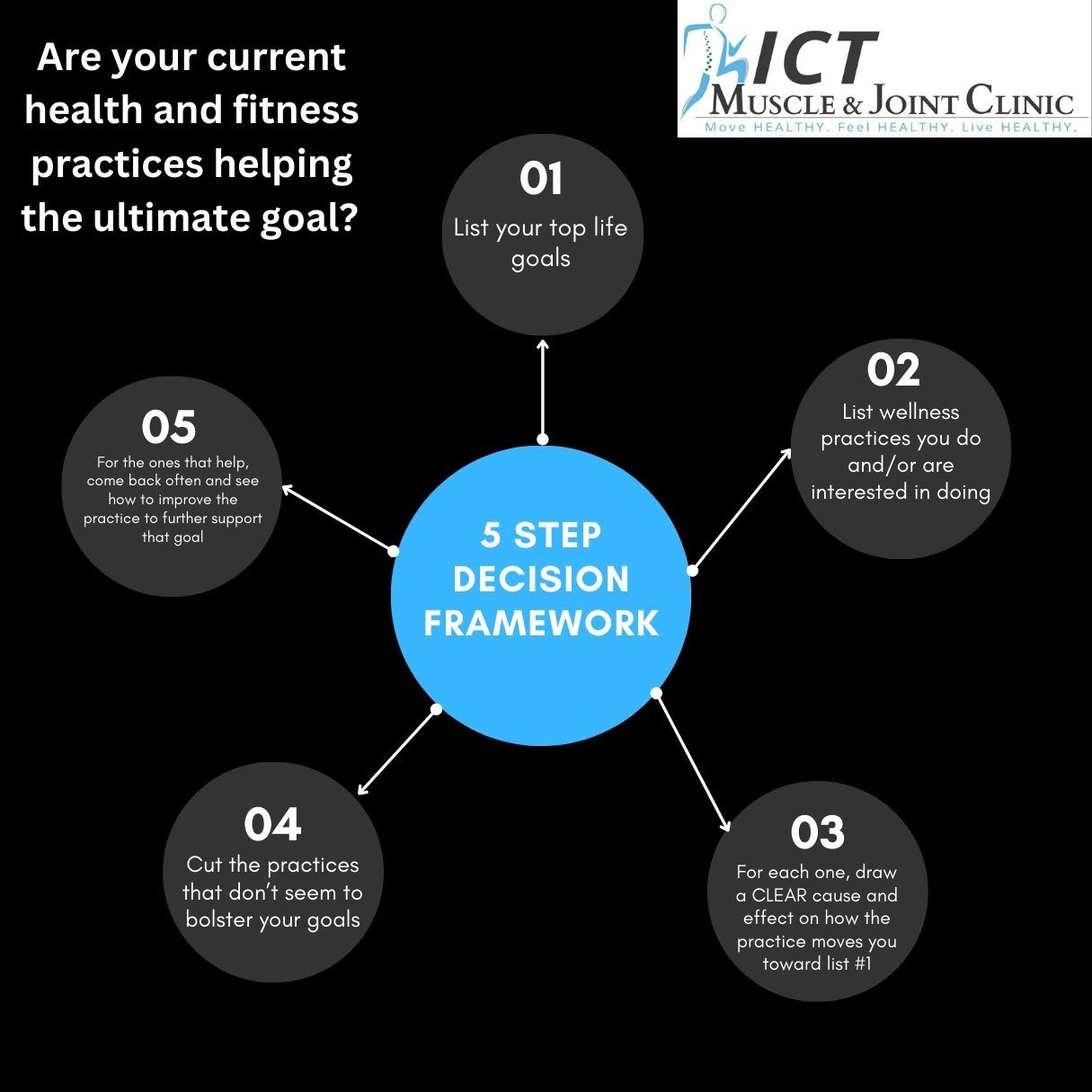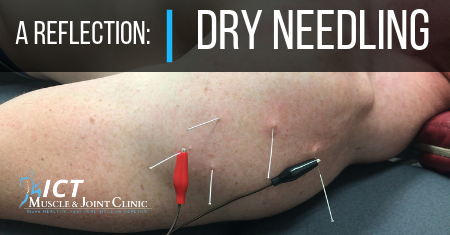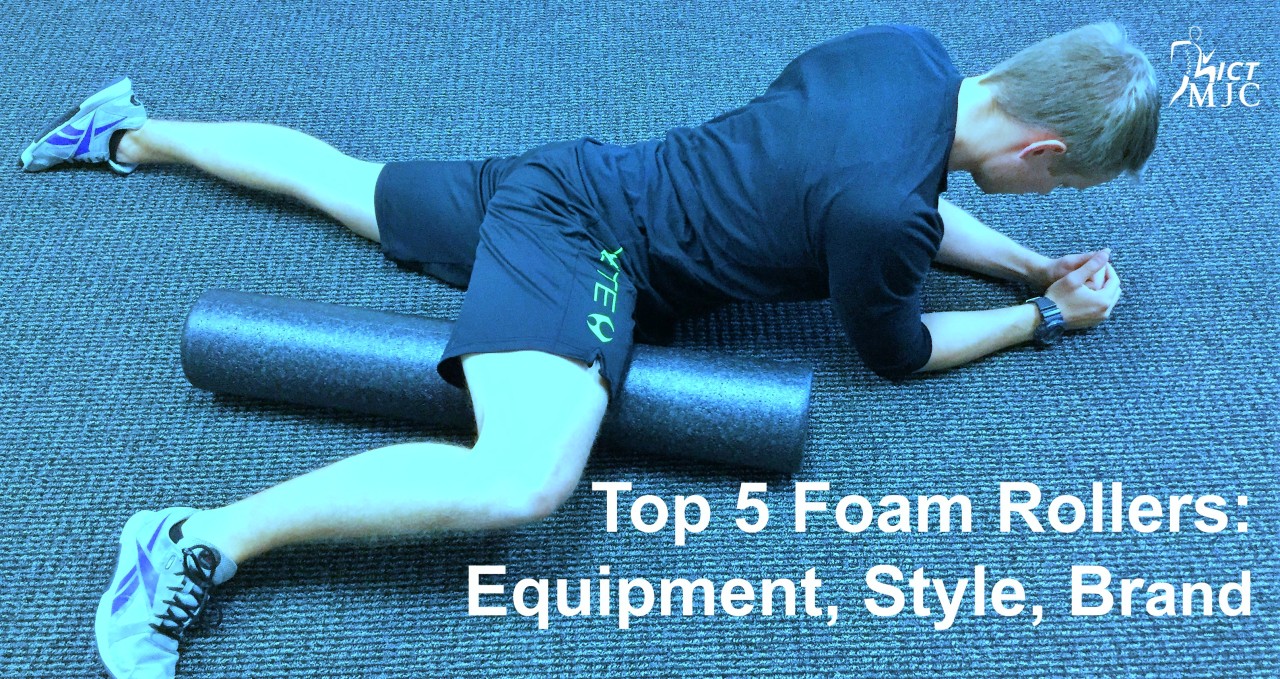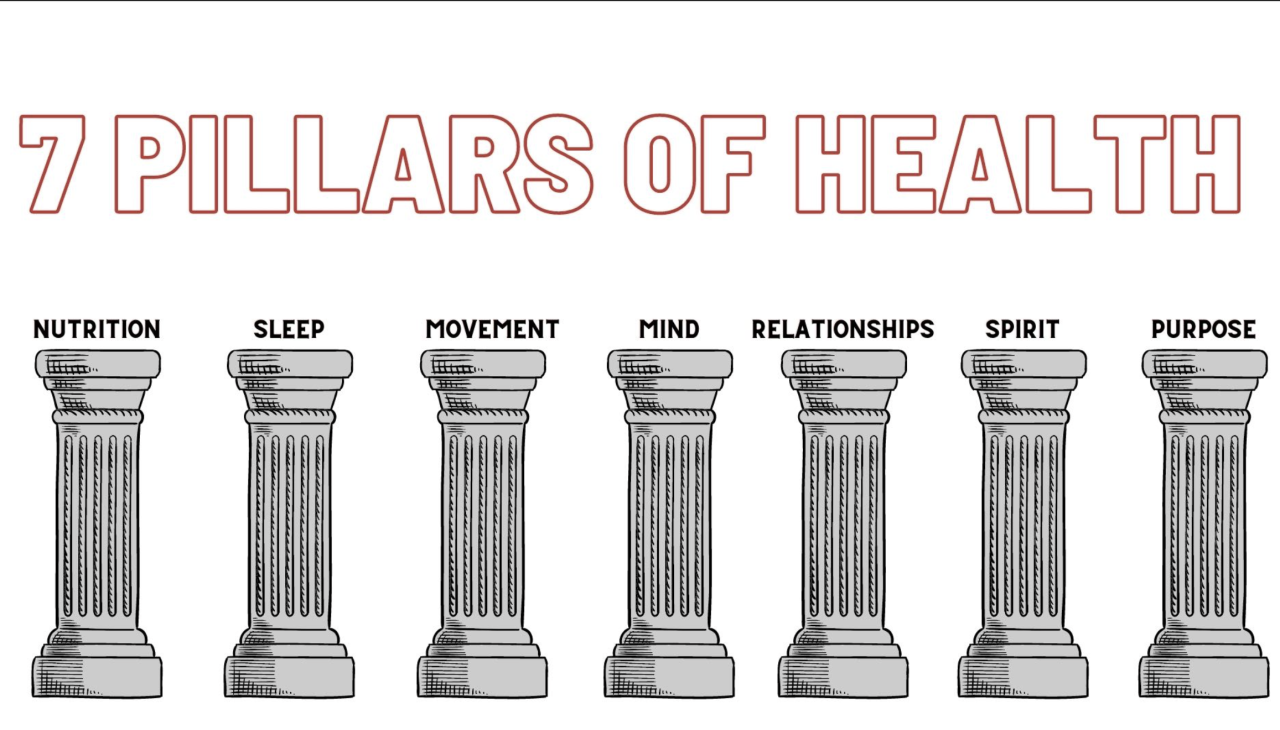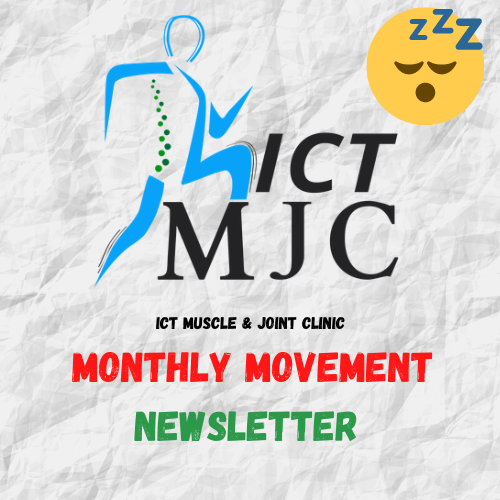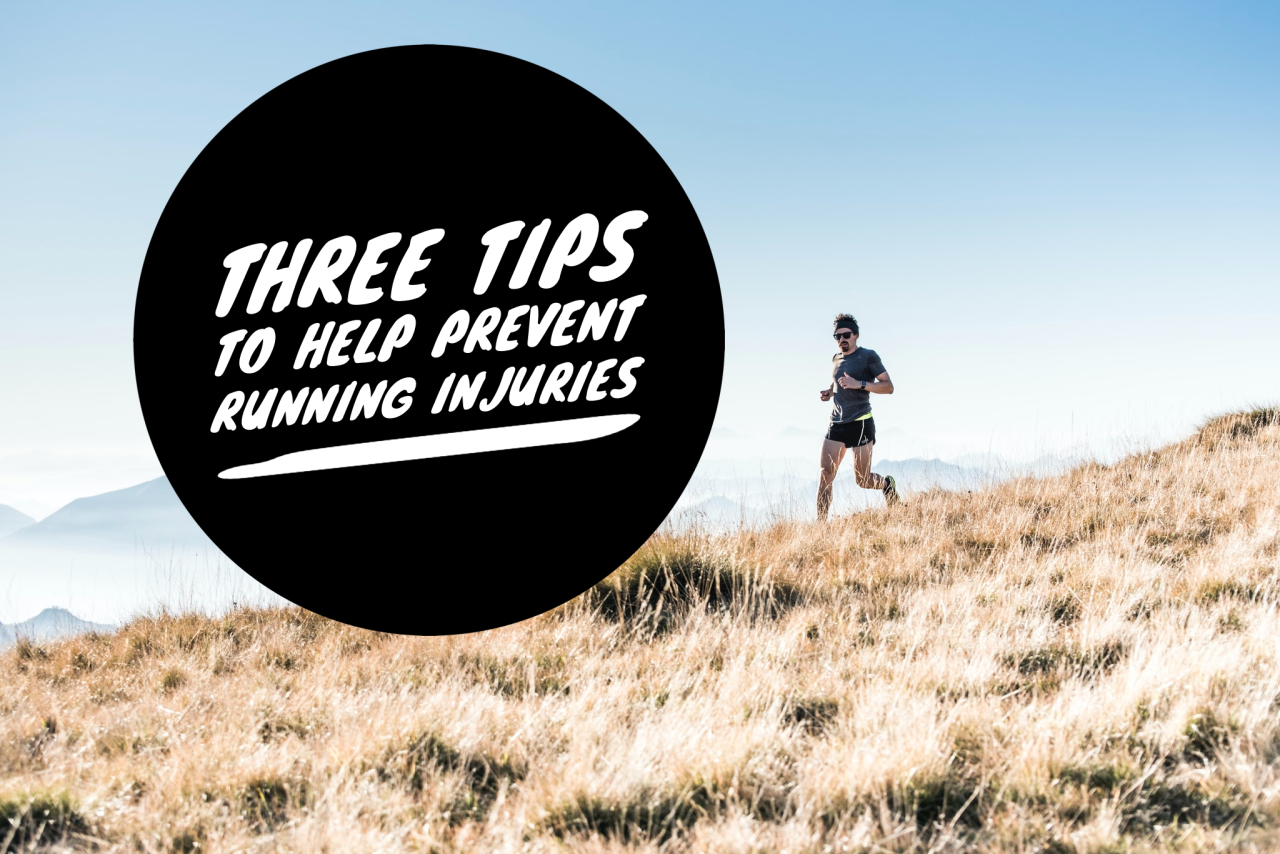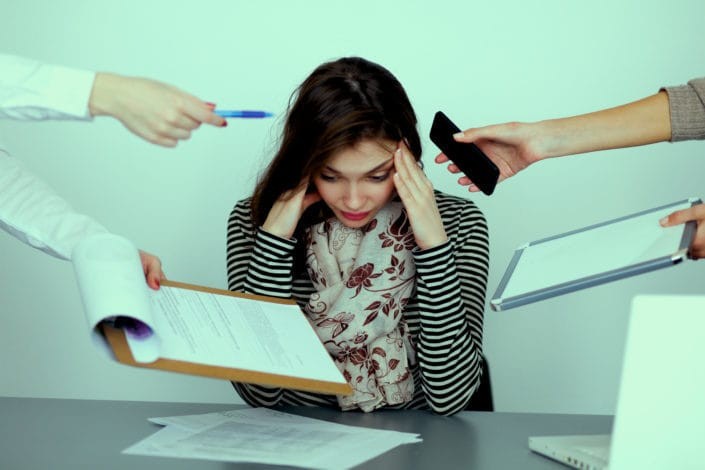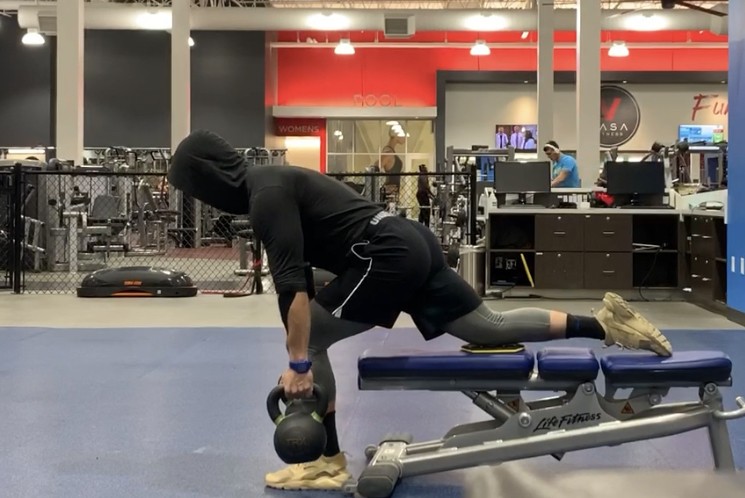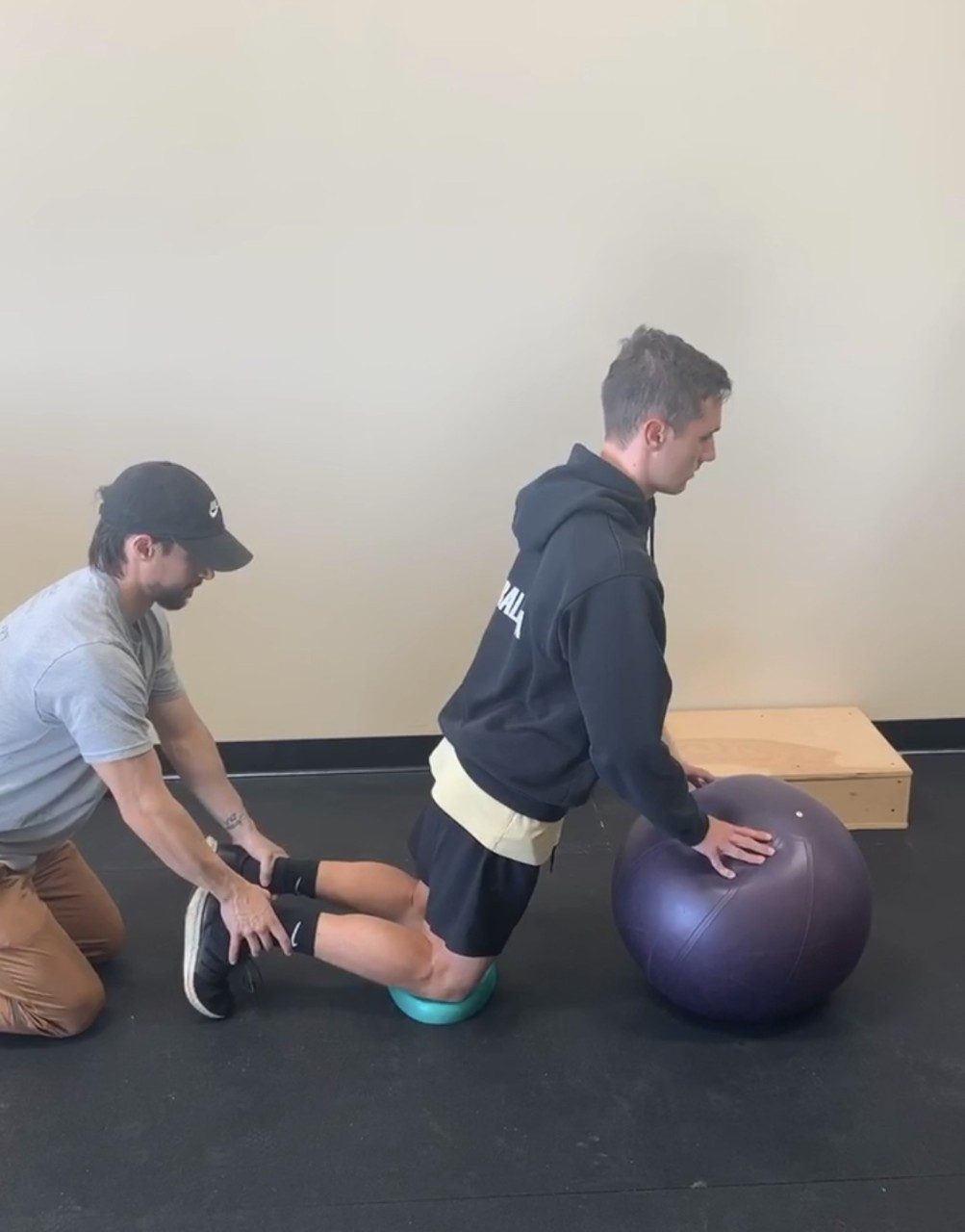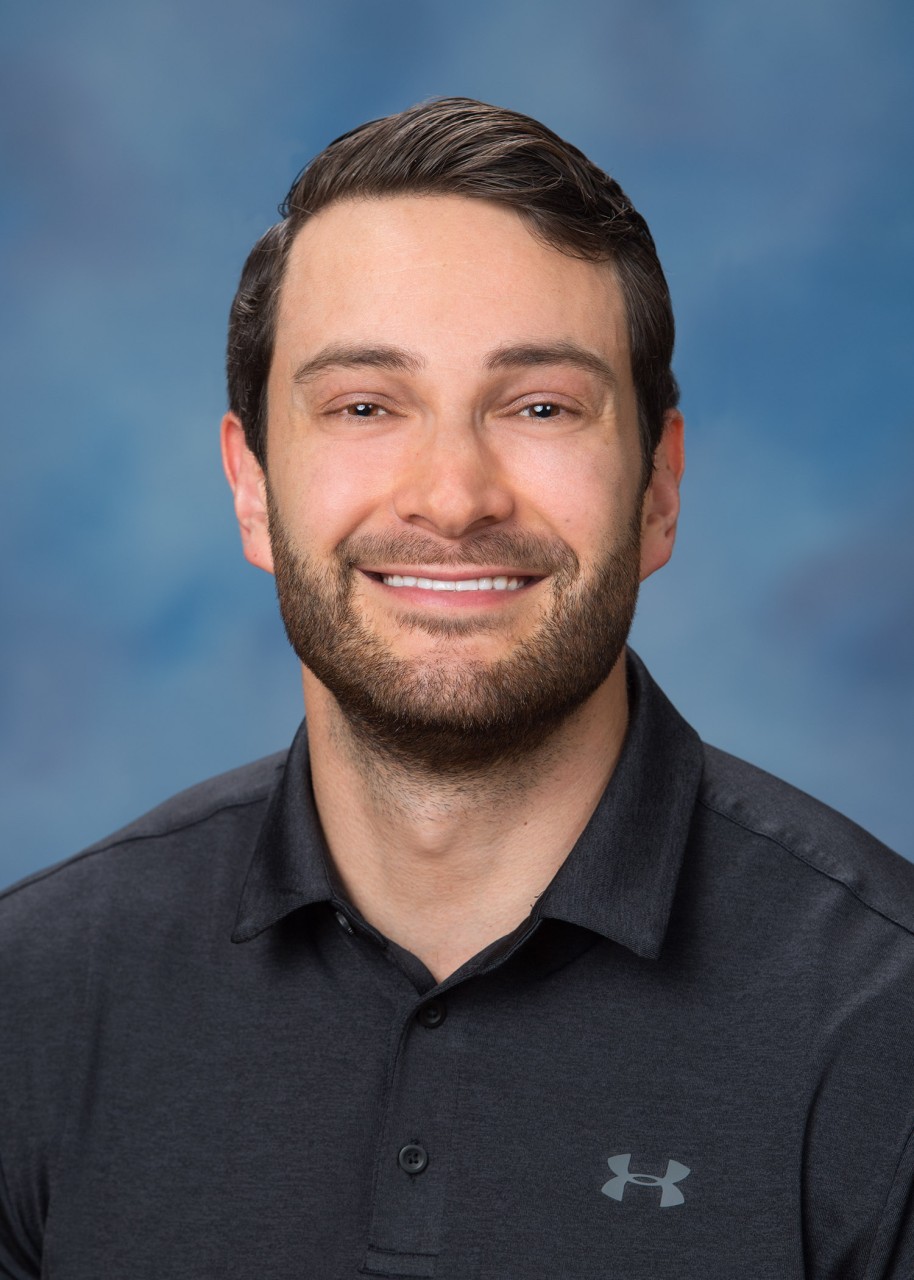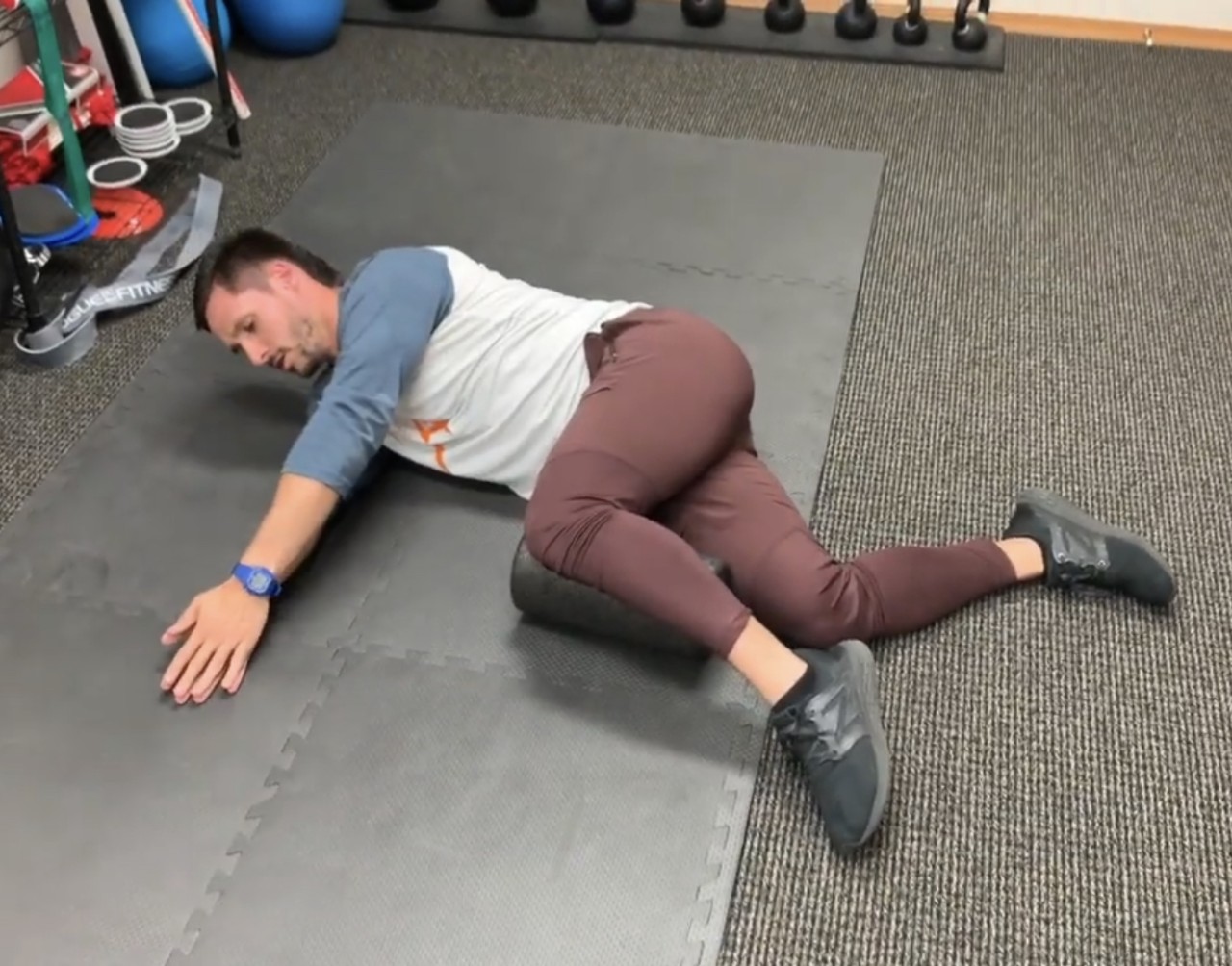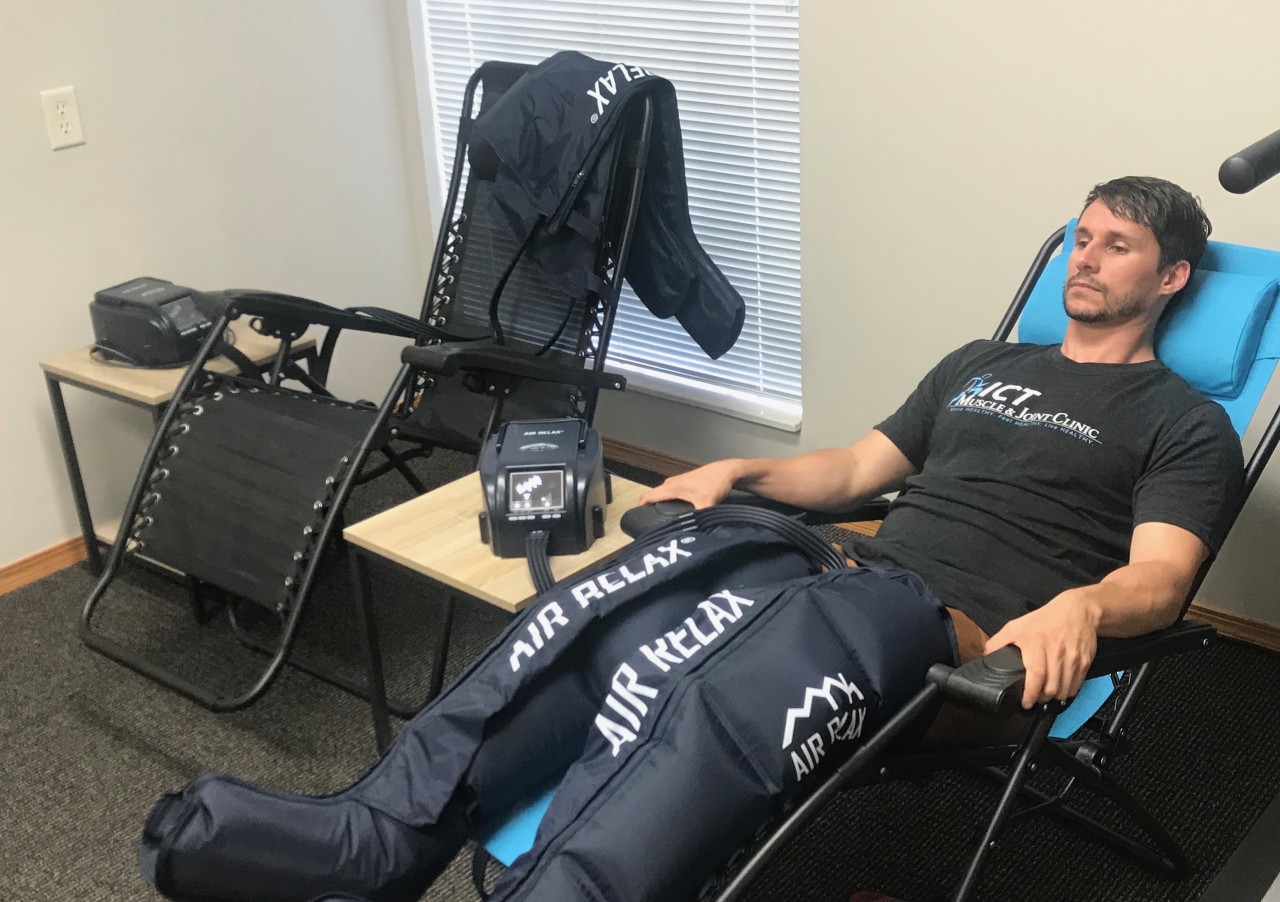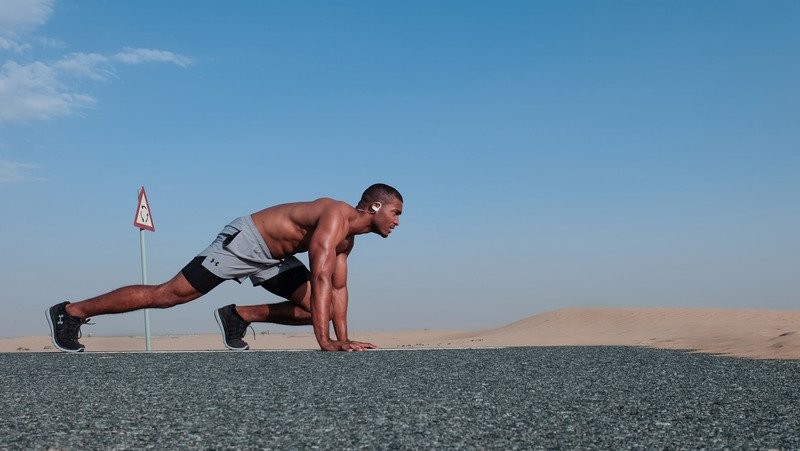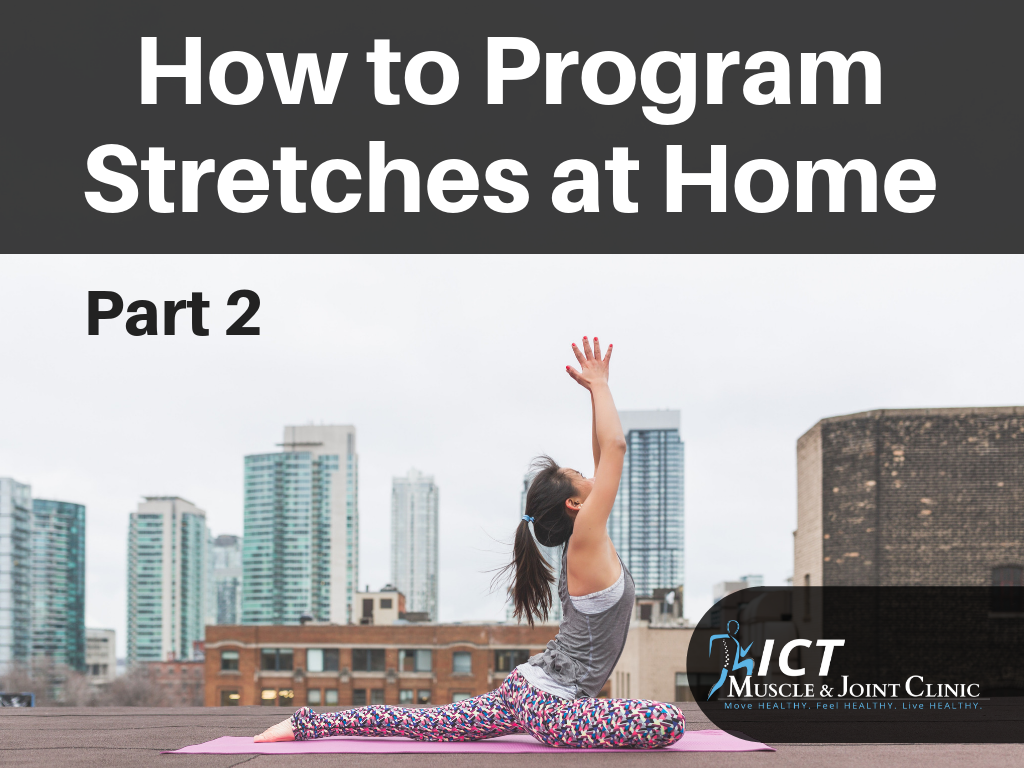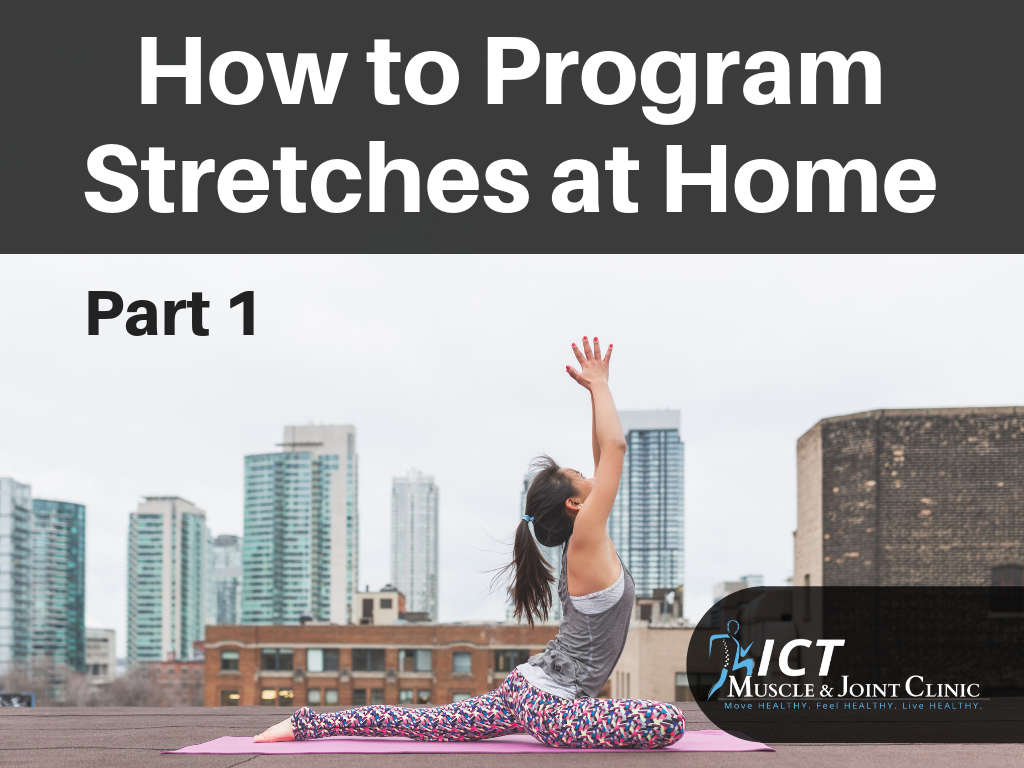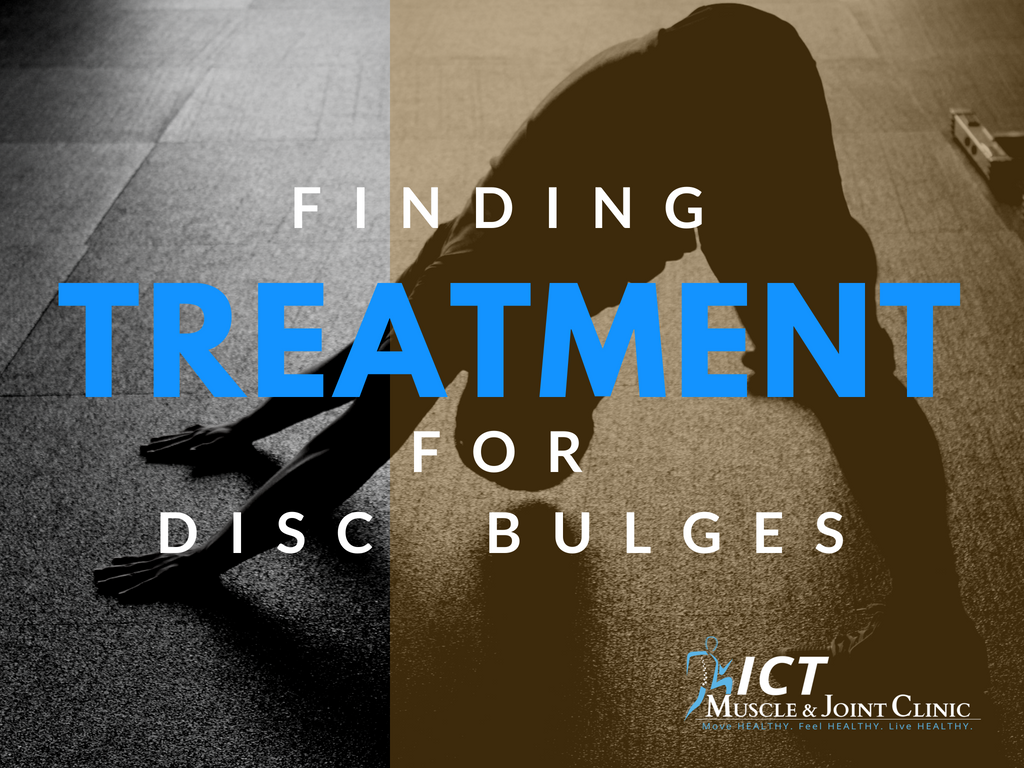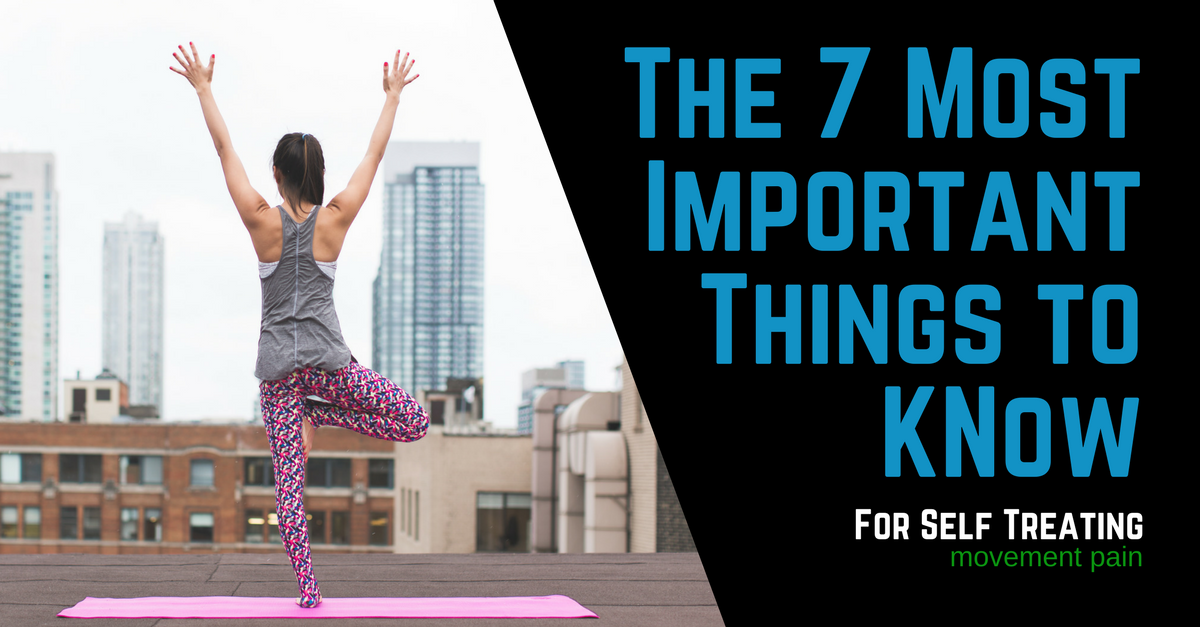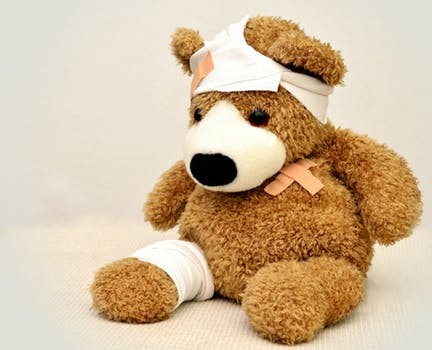Recently I had the opportunity to attended two dry needling courses. I have been dry needling for several years now, however there were many things I took away beyond dry needling myofascial trigger points. Three key points I learned about include: different dry needling techniques, battle acupuncture, and cosmetic dry needling.
Here is a list of my 5 favorite types, of foam rollers or accessory rollers, in no particular order. Each one has its own unique advantage.
The Seven Pillars of Health
If you’re like the average American, you probably already failed your New Year’s Resolution. If one of your goals was to be more “healthy,” it might not even be your fault that you’ve already failed; this is because we don’t have an accurate description of “health.” How is it measured? What goes into being "healthy?"
December Movement Newsletter
We are in the end of fall season and winter starting soon which means the weather gets colder and makes for prime napping. This gets us on this month’s topic: sleep. As many of you have seen, when you fill out intake paperwork with us there are questions on sleep. We know that a main question that may pop in your head can be: “how can sleep relate to my pain and overall health?” We want to answer that as well as give you a few tips we like to use to help address sleep issues you may be having.
About half of the running population is thought to be injured at some point in one year. These “are defined as any damage or disorder that causes significant change or even cessation of ones normal running routine.”(1) So why is this so common? Although there will never be any solution to completely prevent pain, we can try to limit the likelihood and even the severity of the running pain with the following tips. (Additionally, this may focus on our demographic of runners, but some of the same concepts can apply across all spectrums of athletics).
PAIN GUIDELINES
First off it has to be said, if you have a NEW INJURY that is causing pain and is not getting better with any techniques you are doing at home please see a rehab specialist as soon as possible to get it assessed. 𝘎𝘳𝘪𝘯𝘥𝘪𝘯𝘨 𝘵𝘩𝘳𝘰𝘶𝘨𝘩 𝘱𝘢𝘪𝘯 𝘪𝘯 𝘸𝘰𝘳𝘬𝘰𝘶𝘵𝘴 𝘢𝘯𝘥 𝘥𝘢𝘪𝘭𝘺 𝘢𝘤𝘵𝘪𝘷𝘪𝘵𝘪𝘦𝘴 𝘪𝘴 𝘯𝘰𝘵 𝘯𝘰𝘳𝘮𝘢𝘭. 𝘈𝘭𝘴𝘰 𝘪𝘧 𝘺𝘰𝘶 𝘴𝘵𝘢𝘳𝘵 𝘵𝘰 𝘯𝘰𝘵𝘪𝘤𝘦 𝘢 𝘥𝘦𝘤𝘳𝘦𝘢𝘴𝘦 𝘪𝘯 𝘳𝘢𝘯𝘨𝘦 𝘰𝘧 𝘮𝘰𝘵𝘪𝘰𝘯 𝘪𝘯 𝘢 𝘫𝘰𝘪𝘯𝘵 𝘥𝘶𝘳𝘪𝘯𝘨 𝘢 𝘸𝘰𝘳𝘬𝘰𝘶𝘵 𝘰𝘳 𝘥𝘢𝘪𝘭𝘺 𝘢𝘤𝘵𝘪𝘷𝘪𝘵𝘺 𝘵𝘩𝘢𝘵 𝘪𝘴 𝘯𝘰𝘵 𝘨𝘦𝘵𝘵𝘪𝘯𝘨 𝘣𝘦𝘵𝘵𝘦𝘳, 𝘱𝘭𝘦𝘢𝘴𝘦 𝘵𝘢𝘬𝘦 𝘯𝘰𝘵𝘦. 𝘗𝘢𝘪𝘯 𝘪𝘴 𝘶𝘴𝘶𝘢𝘭𝘭𝘺 𝘵𝘩𝘦 𝘭𝘢𝘴𝘵 𝘵𝘩𝘪𝘯𝘨 𝘵𝘰 𝘤𝘰𝘮𝘦 𝘰𝘯. We can save a lot of aches and pains and speed up the rehab process if these things are accessed early and not looked at until you are in unrelenting pain.
Now for this post we are talking the rehab process of an injury AFTER it has been accessed and serious red flags have been ruled out. Meaning we have a plan and are on our way to healing the injured tissue. So the questions become in this process: 𝘚𝘩𝘰𝘶𝘭𝘥 𝘐 𝘢𝘷𝘰𝘪𝘥 𝘢𝘭𝘭 𝘮𝘰𝘷𝘦𝘮𝘦𝘯𝘵𝘴 𝘵𝘩𝘢𝘵 𝘢𝘳𝘦 𝘱𝘢𝘪𝘯𝘧𝘶𝘭? 𝘞𝘩𝘦𝘯 𝘴𝘩𝘰𝘶𝘭𝘥 𝘐 𝘴𝘵𝘰𝘱 𝘥𝘰𝘪𝘯𝘨 𝘢𝘯 𝘢𝘤𝘵𝘪𝘷𝘪𝘵𝘺 𝘪𝘧 𝘪𝘵 𝘪𝘴 𝘱𝘢𝘪𝘯𝘧𝘶𝘭? 𝘓𝘦𝘵 𝘵𝘩𝘦 𝘴𝘵𝘰𝘱𝘭𝘪𝘨𝘩𝘵 𝘴𝘺𝘴𝘵𝘦𝘮 𝘣𝘦 𝘺𝘰𝘶𝘳 𝘨𝘶𝘪𝘥𝘦.
STOP LIGHT SYSTEM TO PAIN
𝐑𝐞𝐦𝐞𝐦𝐛𝐞𝐫: 𝐇𝐮𝐫𝐭 𝐝𝐨𝐞𝐬 𝐧𝐨𝐭 𝐚𝐥𝐰𝐚𝐲𝐬 𝐞𝐪𝐮𝐚𝐥 𝐡𝐚𝐫𝐦.
RED LIGHT:
1. Major loss in range of motion or strength (more than 50%) after doing an activity.
2. Pain increases during activity
3. Lingering pain (not workout soreness) that last several days after doing an activity.
𝐀𝐜𝐭𝐢𝐨𝐧 𝐏𝐥𝐚𝐧: STOP THE ACTIVITY THAT CAUSED IT 𝐚𝐧𝐝 𝐬𝐞𝐞𝐤 𝐦𝐞𝐝𝐢𝐜𝐚𝐥 𝐚𝐝𝐯𝐢𝐜𝐞 𝐟𝐫𝐨𝐦 𝐲𝐨𝐮𝐫 𝐫𝐞𝐡𝐚𝐛 𝐩𝐫𝐨𝐟𝐞𝐬𝐬𝐢𝐨𝐧𝐚𝐥.
YELLOW LIGHT:
1. No change in range of motion, strength, and function.
2. Pain spikes during the activity.
3. Pain persists AFTER activity by 3 numbers (ex: 2/10 to 5/10) for more than couple hours or you wake up the next day and is still spiking.
𝐀𝐜𝐭𝐢𝐨𝐧 𝐏𝐥𝐚𝐧: 𝐑𝐞𝐦𝐞𝐦𝐛𝐞𝐫 𝐚 𝐟𝐥𝐚𝐫𝐞 𝐮𝐩 𝐢𝐧 𝐩𝐚𝐢𝐧 𝐝𝐨𝐞𝐬 𝐍𝐎𝐓 𝐞𝐪𝐮𝐚𝐥 𝐡𝐚𝐫𝐦. 𝐈𝐭 𝐢𝐬 𝐚 𝐩𝐚𝐫𝐭 𝐨𝐟 𝐭𝐡𝐞 𝐩𝐫𝐨𝐜𝐞𝐬𝐬 𝐚𝐧𝐝 𝐢𝐭 𝐣𝐮𝐬𝐭 𝐦𝐞𝐚𝐧𝐬 𝐭𝐨𝐨 𝐦𝐮𝐜𝐡 𝐭𝐨𝐨 𝐟𝐚𝐬𝐭. 𝐓𝐚𝐤𝐞 𝐧𝐨𝐭𝐞 𝐚𝐧𝐝 𝐬𝐭𝐚𝐲 𝐜𝐨𝐮𝐫𝐬𝐞 𝐰𝐢𝐭𝐡 𝐧𝐨𝐫𝐦𝐚𝐥 𝐚𝐜𝐭𝐢𝐯𝐢𝐭𝐲. 𝐀𝐯𝐨𝐢𝐝 𝐢𝐧𝐜𝐫𝐞𝐚𝐬𝐢𝐧𝐠 𝐚𝐜𝐭𝐢𝐯𝐢𝐭𝐲 (𝐬𝐩𝐞𝐞𝐝, 𝐥𝐨𝐚𝐝, 𝐯𝐨𝐥𝐮𝐦𝐞 𝐨𝐟 𝐚𝐧 𝐞𝐱𝐞𝐫𝐜𝐢𝐬𝐞) 𝐨𝐫 𝐚𝐝𝐝𝐢𝐧𝐠 𝐚𝐧𝐲 𝐧𝐞𝐰 𝐚𝐜𝐭𝐢𝐯𝐢𝐭𝐲. 𝐈𝐟 𝐬𝐚𝐦𝐞 𝐩𝐚𝐭𝐭𝐞𝐫𝐧 𝐜𝐨𝐧𝐭𝐢𝐧𝐮𝐞𝐬 𝐭𝐡𝐞 𝐧𝐞𝐱𝐭 𝐭𝐢𝐦𝐞, 𝐝𝐞𝐜𝐫𝐞𝐚𝐬𝐞 𝐚𝐜𝐭𝐢𝐯𝐢𝐭𝐲 𝐛𝐲 𝟓𝟎% (𝐥𝐨𝐚𝐝, 𝐬𝐞𝐭𝐬, 𝐫𝐞𝐩𝐬, 𝐝𝐮𝐫𝐚𝐭𝐢𝐨𝐧, 𝐬𝐩𝐞𝐞𝐝) 𝐚𝐧𝐝 𝐠𝐨 𝐛𝐚𝐜𝐤 𝐚𝐧𝐝 𝐬𝐞𝐞 𝐢𝐟 𝐩𝐞𝐫𝐬𝐢𝐬𝐭𝐢𝐧𝐠 𝐩𝐚𝐢𝐧 𝐝𝐞𝐜𝐫𝐞𝐚𝐬𝐞𝐬. 𝐈𝐟 𝐢𝐭 𝐢𝐬 𝐛𝐞𝐭𝐭𝐞𝐫 𝐭𝐡𝐞𝐧 𝐬𝐭𝐚𝐲 𝐭𝐡𝐞𝐫𝐞 𝐟𝐨𝐫 𝐜𝐨𝐮𝐩𝐥𝐞 𝐝𝐚𝐲𝐬 𝐚𝐧𝐝 𝐭𝐡𝐞𝐧 𝐢𝐧𝐜𝐫𝐞𝐚𝐬𝐞 𝐚𝐜𝐭𝐢𝐯𝐢𝐭𝐲 𝐠𝐫𝐚𝐝𝐮𝐚𝐥𝐥𝐲 𝐚𝐠𝐚𝐢𝐧. 𝐈𝐟 𝐢𝐭 𝐢𝐬 𝐧𝐨𝐭 𝐭𝐡𝐞𝐧 𝐜𝐨𝐧𝐬𝐮𝐥𝐭 𝐲𝐨𝐮𝐫 𝐫𝐞𝐡𝐚𝐛 𝐩𝐫𝐨𝐟𝐞𝐬𝐬𝐢𝐨𝐧𝐚𝐥.
GREEN LIGHT:
1. No change in range of motion, strength, and function.
2. Pain spikes during the activity.
3. Pain is no worse after activity and back to baseline after few minutes.
𝐀𝐜𝐭𝐢𝐨𝐧 𝐏𝐥𝐚𝐧: 𝐒𝐭𝐚𝐲 𝐭𝐡𝐞 𝐜𝐨𝐮𝐫𝐬𝐞. 𝐁𝐞 𝐜𝐨𝐧𝐟𝐢𝐝𝐞𝐧𝐭 𝐚𝐧𝐝 𝐠𝐫𝐚𝐝𝐮𝐚𝐥𝐥𝐲 𝐥𝐨𝐚𝐝 𝐚𝐧𝐝 𝐜𝐡𝐚𝐥𝐥𝐞𝐧𝐠𝐞 𝐭𝐡𝐞 𝐭𝐢𝐬𝐬𝐮𝐞 𝐦𝐨𝐫𝐞 𝐚𝐧𝐝 𝐦𝐨𝐫𝐞 𝐨𝐯𝐞𝐫 𝐭𝐢𝐦𝐞.
HOW ICT MUSCLE & JOINT CAN HELP YOUR PAIN
𝘏𝘦𝘳𝘦 𝘢𝘵 𝘐𝘊𝘛 𝘔𝘶𝘴𝘤𝘭𝘦 & 𝘑𝘰𝘪𝘯𝘵 in Wichita 𝘸𝘦 𝘩𝘢𝘷𝘦 𝘵𝘦𝘤𝘩𝘯𝘪𝘲𝘶𝘦𝘴 𝘭𝘪𝘬𝘦 𝘤𝘩𝘪𝘳𝘰𝘱𝘳𝘢𝘤𝘵𝘪𝘤 𝘢𝘥𝘫𝘶𝘴𝘵𝘪𝘯𝘨, 𝘥𝘳𝘺 𝘯𝘦𝘦𝘥𝘭𝘪𝘯𝘨, 𝘐𝘈𝘚𝘛𝘔, 𝘢𝘯𝘥 𝘤𝘶𝘱𝘱𝘪𝘯𝘨 𝘵𝘰 𝘩𝘦𝘭𝘱 𝘳𝘦𝘭𝘪𝘦𝘷𝘦 𝘱𝘢𝘪𝘯 𝘢 𝘭𝘪𝘵𝘵𝘭𝘦 𝘣𝘪𝘵, 𝘣𝘶𝘵 𝘢𝘭𝘭 𝘵𝘩𝘢𝘵 𝘪𝘴 𝘢 𝘮𝘦𝘢𝘯𝘴 𝘵𝘰 𝘨𝘦𝘵 𝘺𝘰𝘶 𝘮𝘰𝘷𝘪𝘯𝘨 𝘢𝘯𝘥 𝘨𝘦𝘵 𝘺𝘰𝘶 𝘴𝘵𝘳𝘰𝘯𝘨 𝘢𝘨𝘢𝘪𝘯. We use this stop light system to help guide you to being more resilient and come out of any injury being more educated and stronger than before.
References: "A World of Hurt: A Guide to Classifying Pain"
In this two part blog series, we discuss how the key to becoming less "stressed" is actually incorporating daily habits that allow you to handle life's difficult situations better.
As we are in the thick of the fall sports season, one of the most common injuries for athletes is a hamstring strain. Although how injuries occur are a multi-factorial event, there are exercises we can program to help reduce the likelihood of this injury by building resiliency, strength and mobility.
What’s up Wichita Community! My name is Tyler Panko and I am a recent graduate of Cleveland University in Kansas City with a Doctorate of Chiropractic degree. I grew up on a small town, cattle farm in Tekamah, Nebraska with my parents and four older brothers. Within that environment, I developed an empathy and passion for helping people. As a kid, I cultivated a great interest in sports and human performance. While most kids asked for toys at the grocery store, I asked for the monthly edition of Men’s Health magazine to investigate new training strategies. Throughout high school and college, I considered athletic training and physical therapy, but eventually settled on chiropractic medicine after obtaining my undergraduate degree from the University of Nebraska- Lincoln. Go Big Red!
Pain often comes on insidiously. You may think it’s no certain cause, but a lot of it can come down to self-care habits. I often tell patients that pain is usually stars aligning with a lot of variables that all added up to finally having the tissue “give out” and sending off a painful signal(s) to the brain: physical inactivity, lack of quality nutrition, constant strain or posture, poor sleep habits, insufficient water intake, etc. This isn’t always the case of course, but a combination of these can definitely be main factors of why you’re in the state you’re in.
Since we are on the theme of running lately, let’s dive into some running topics and tips going into this summer for your runs and races!
The whole moto of this approach is “too much of a good thing can be bad.” With each example, in Part 1, the person started to experience a decline in feeling better when performing more reps or more amount of time spent in a specific stretch. Let’s explain why.
Easiest truth, find a McKenzie or Mechanical Therapy & Diagnosis (MDT) healthcare provider. This will save you money, time, and frustration. If a clinic’s website does not list MDT than the doctors on staff do not understand MDT. MDT is one of the most botched techniques out there, much like A.R.T., and the growing rise in popularity with dry needling. In my opinion, McKenzie, is the number one conservative-based approach to treating symptoms commonly associated with disc pain and onto further physical therapeutic care and rehab. Sure there are other things that can help treat disc pain such as decompression and distraction machines, however they do not promote self-care which only increase costs to you and the entire healthcare system as a whole.
When it comes to self-treatment, there is a plethora of information on the internet. How do you navigate it accordingly? Stretch this, activate that, feel here and not there – you can quickly be standing on your head feeling more lost then when you started. We have put together a “cheat sheet” on what we find are the most important CONCEPTS when trying to self-treat at home. By focusing your efforts on concepts or principles, it will help weed out 95% of unneeded information on the web.
I am tired of seeing orthotics being prescribed like pills. Oh, your foot hurts… Well this shoe and orthotic combo work wonders but it will cost you $1300+. Um… No. Has your foot pain hurt you your entire life? Chances are the answer is a strong no! Over-the-counter orthotics are relatively pointless to relieve your pain unless they cost $20 or less constructed with Sorbothane. Here is a link for a pair on Amazon or if you want them now most Walgreens or CVS carry them. Sorbothane is the best shock absorbing material on the market, period. This type of orthotic is more for those individuals that have generalized foot pain during long periods of standing.
